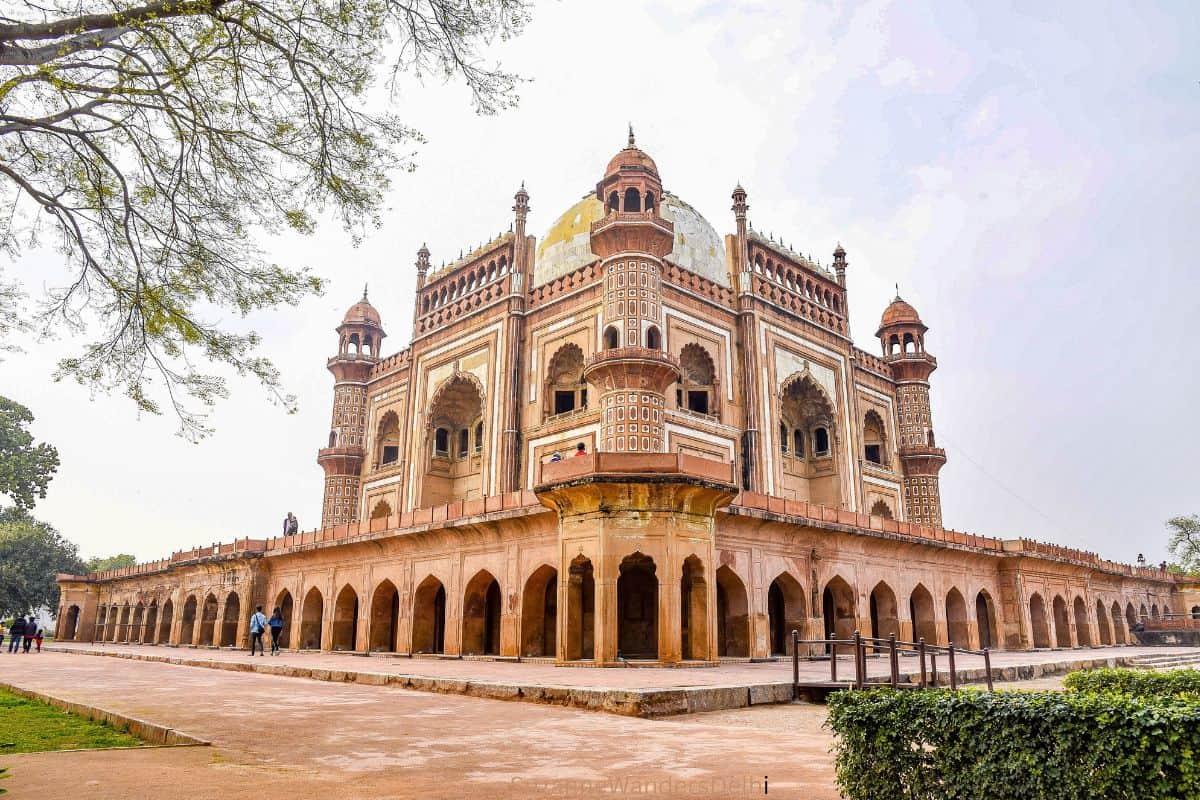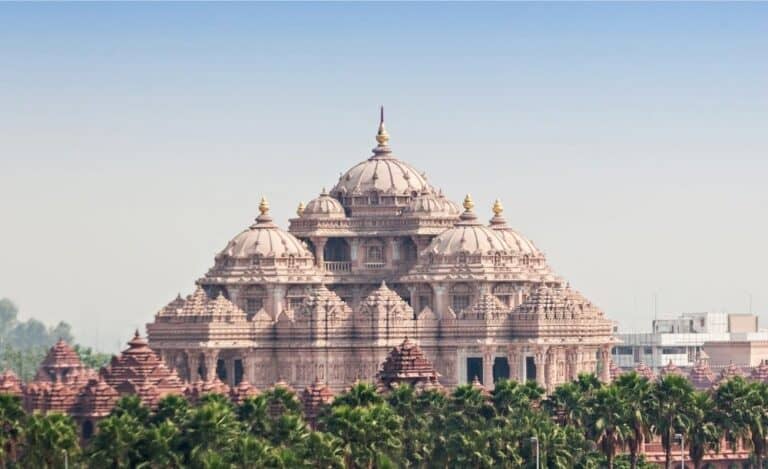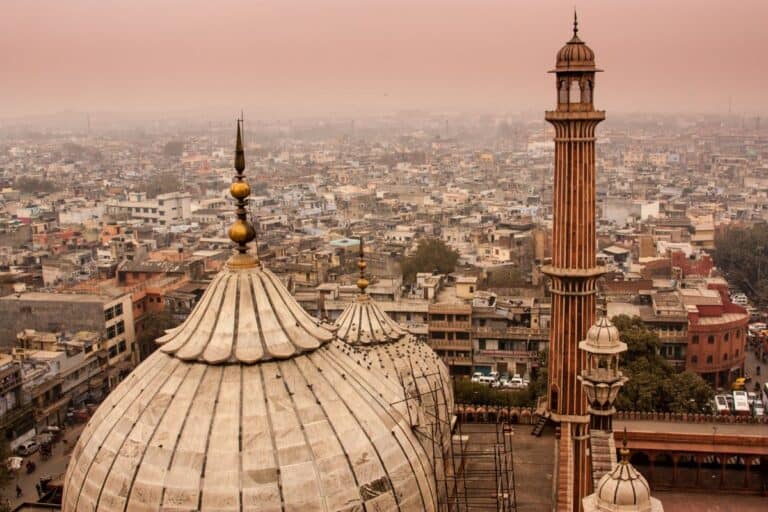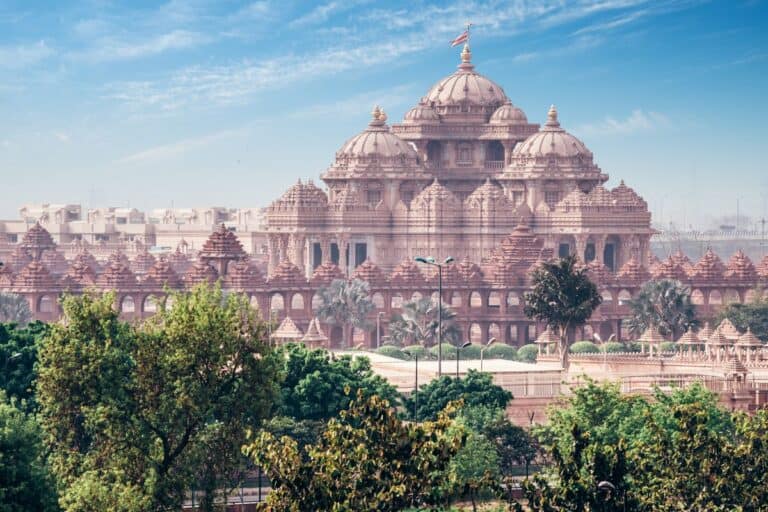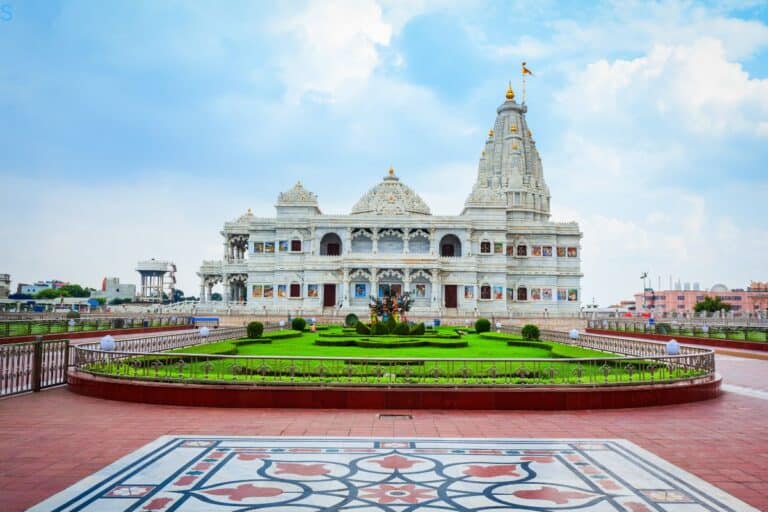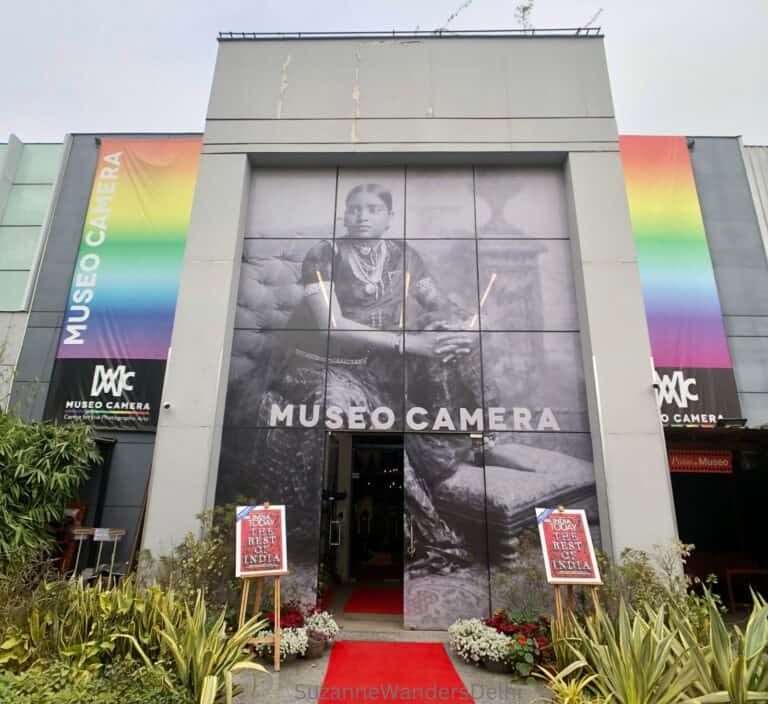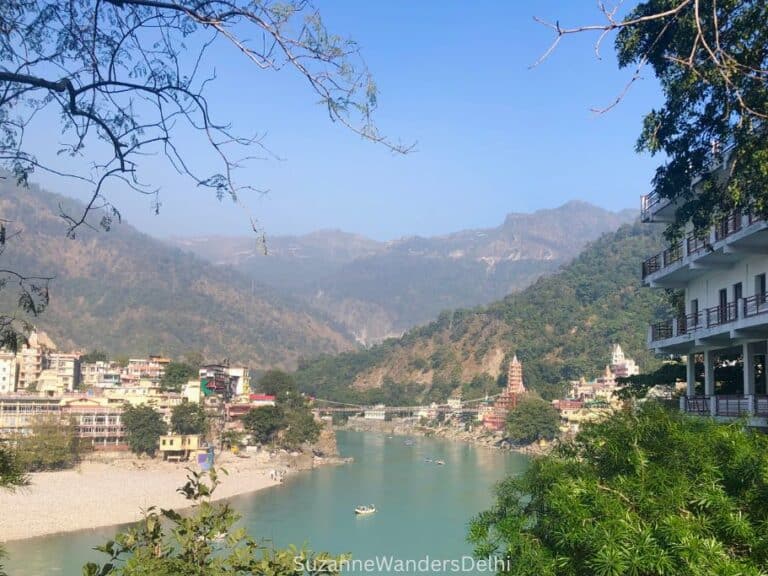Tomb of Safdarjung: Visiting India’s Last Garden Tomb 2025

If you have driven through South Delhi, you might have passed Safdarjung Tomb. It is an imposing Mughal style tomb, with a massive gate and 4 towers. You certainly would have noticed it. South Delhi has many tombs, but this is one of the largest and most impressive.
I can’t recall when I first visited the tomb of Safdarjung, but I have been back many times. It’s located in the loveliest part of New Delhi, very close to Lodhi Garden and Khan Market, so it is a regular stop whenever I have visitors.
It’s called Safdarjung Tomb, but it’s actually a mausoleum with a tomb inside. India refers to these mausoleums as tombs. Some are large and majestic, like Delhi’s Humayun’s Tomb or the Taj Mahal in Agra. They are all beautiful and an important piece of India’s history.
Visiting the Tomb of Safdarjung: Overview
This is one of the most beautiful and atmospheric tombs in Delhi. Built at the end of the Mughal empire, it is the last garden style tomb built in India.
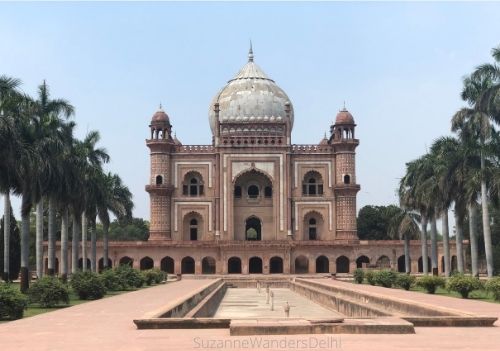
Safdarjung Tomb is often credited with being the inspiration for the Taj Mahal, but this is false. It was built long after the Taj Mahal.
During the Mughal empire (1526 – 1761), many tombs were built in Delhi. It was a way to leave a lasting legacy and make a political statement.
In fact, South Delhi is full of these tombs, and you’ll probably pass a few when you are out exploring. But Safdarjung is definitely one of the largest and grandest.
I recommend buying your tickets online, in advance so you can avoid the ticket counter. The ticket counter can’t always make change, and sometimes doesn’t accept electronic payments. The attendants also don’t always show up on time. It’s Delhi… you just have to go with it.
Hours: 7:00 am to 9:00 pm, daily
Cost: INR 300 for foreigners, children under 15 free (tickets are INR 250 if purchased online on the Archeological Survey of India website)
Location: Sri Aurobindo Marg, Jorbagh, New Delhi
What To Expect
The tomb of Safdarjung is one of the largest in Delhi, but you can easily explore it in 1 or 1.5 hours. It’s very photogenic, but try to go in the early morning or evening for the best light.
You may get lucky and see peacocks in the morning, they frequent the gardens.
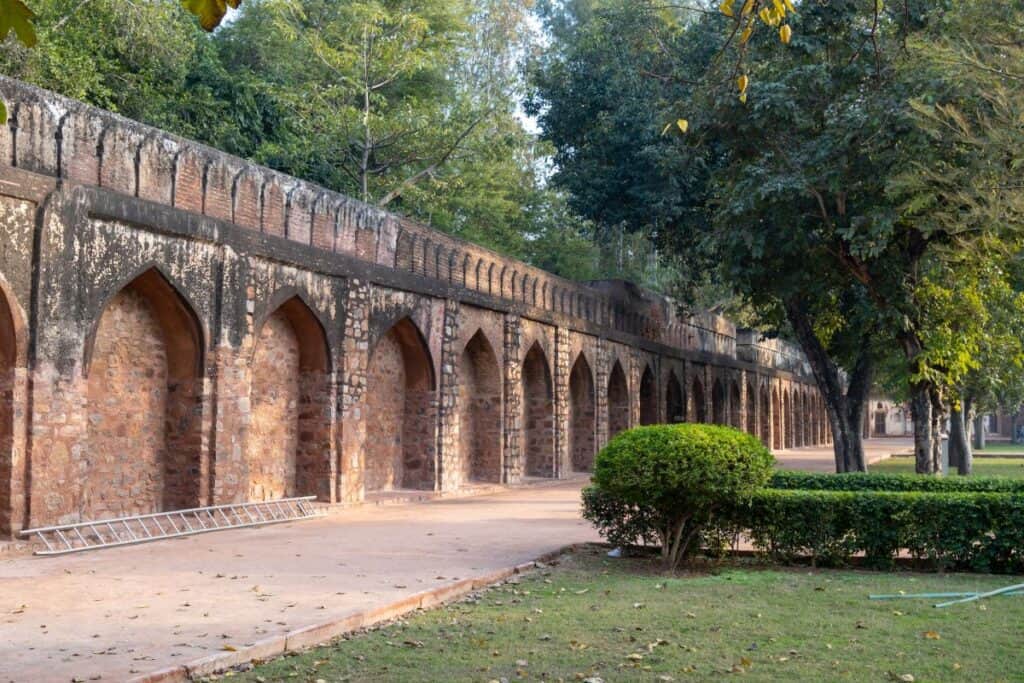
There isn’t a ton of walking, but there are stairs. Besides exploring the mausoleum, there is a three domed mosque, and you can stroll around the gardens and perimeter wall. There’s limited shade in the gardens, so make sure you bring water, a hat and sunglasses.
You can’t purchase food or drinks inside Safdarjung Tomb, but there are usually vendors set up outside the entrance. Toilet facilities are on site, though I have never used them and cannot vouch for their cleanliness.
If you want to get something to eat or drink after visiting Safdarjung Tomb, walk (about 10 minutes), or take an auto rickshaw to Lodhi Colony. These are great places to eat there:
- Jamun – modern Indian food, very good
- Guppy – excellent Japanese style food
- Jaatre – amazing ice cream in some very Indian flavours, like fresh jamun or black pepper & cardamom
Tomb of Safdarjung History
Safdarjung Tomb was completed in 1754 for Nawab Safdarjung, a powerful Vazir in the royal court. In fact, he was so powerful, rival factions within court ran him out of Delhi shortly before he died.
His son had to plead with the emperor to be allowed to build the mausoleum.
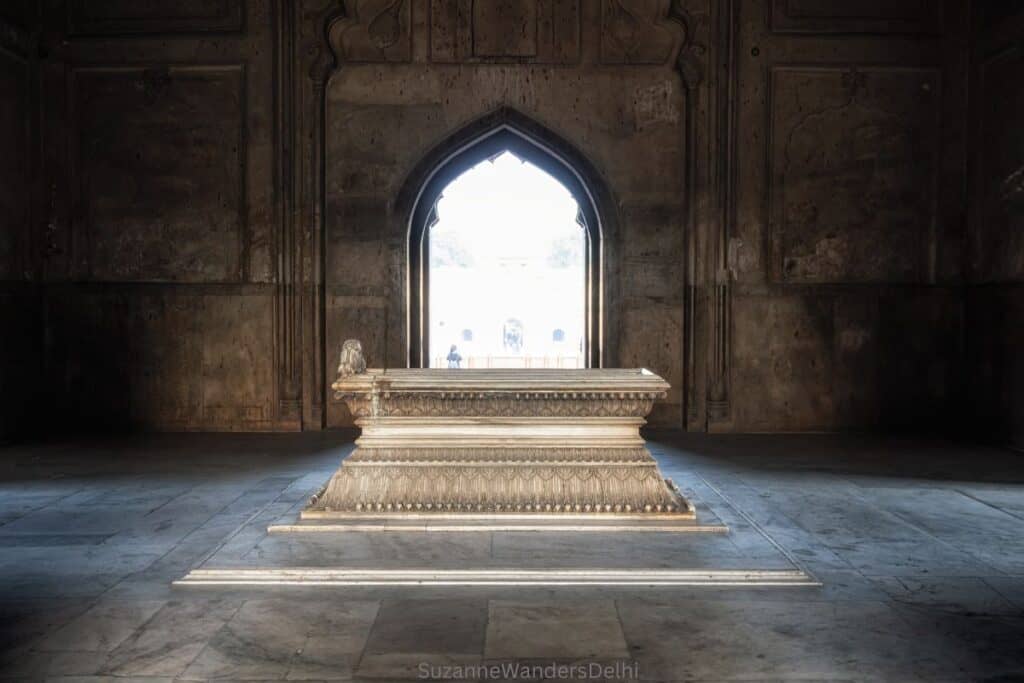
It looks grandiose, but in fact the mausoleum was built with sub-par materials, and by raiding other tombs for marble and sandstone. Even the design is a bit off, often derided for being too narrow.
If you look at the marble in the mausoleum and on the domed roof, you’ll notice variations in size and colour. That’s because almost all the marble was plundered, and had to be pieced together.
Even the carved dome ceilings were made from plaster instead of marble, as was the norm in earlier Mughal tombs. By this time the Mughals were in decline and just didn’t have the wealth or resources.
How To Get There
Safdarjung Tomb is centrally located and very easy to reach.
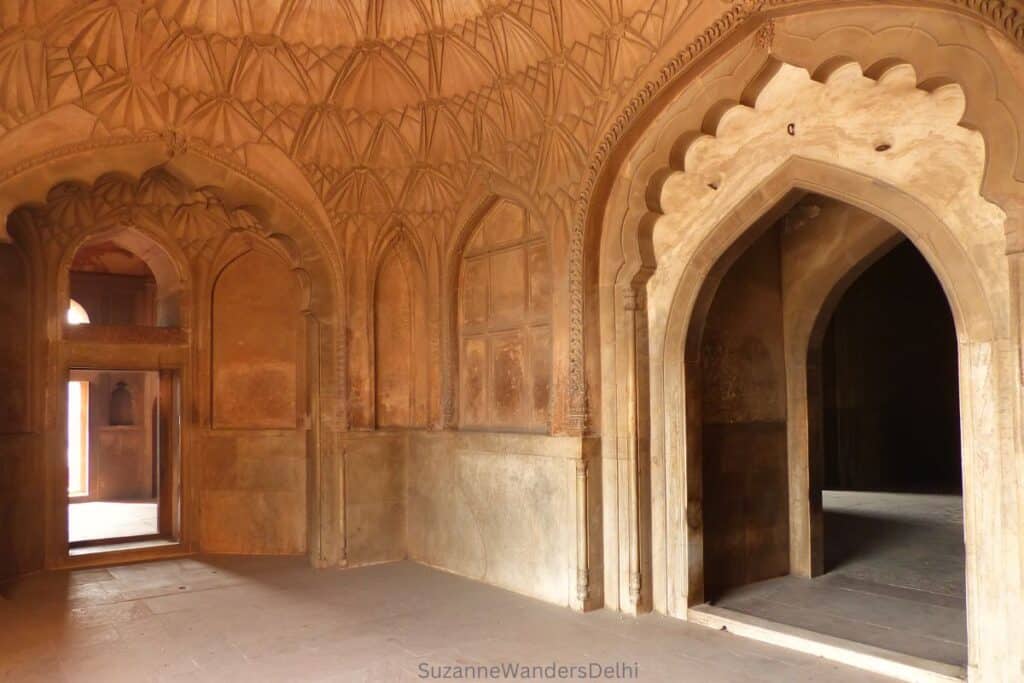
If you are staying in South or Central Delhi, the best way is to use an auto rickshaw (if you are less than 3 km away), or Uber. Both are reliable and widely used in Delhi.
You can also take the Delhi metro to Safdarjung Tomb, especially if you are more than 5 km away. Jorbagh station on the Yellow line (use exit gate 2) is only a 5 minute walk from the tomb entrance. The Delhi metro is an excellent system, don’t hesitate to use it.
What Else Can You See Close By
Safdarjung Tomb is close to some of Delhi’s best sites and attractions. You can even walk to some of them:
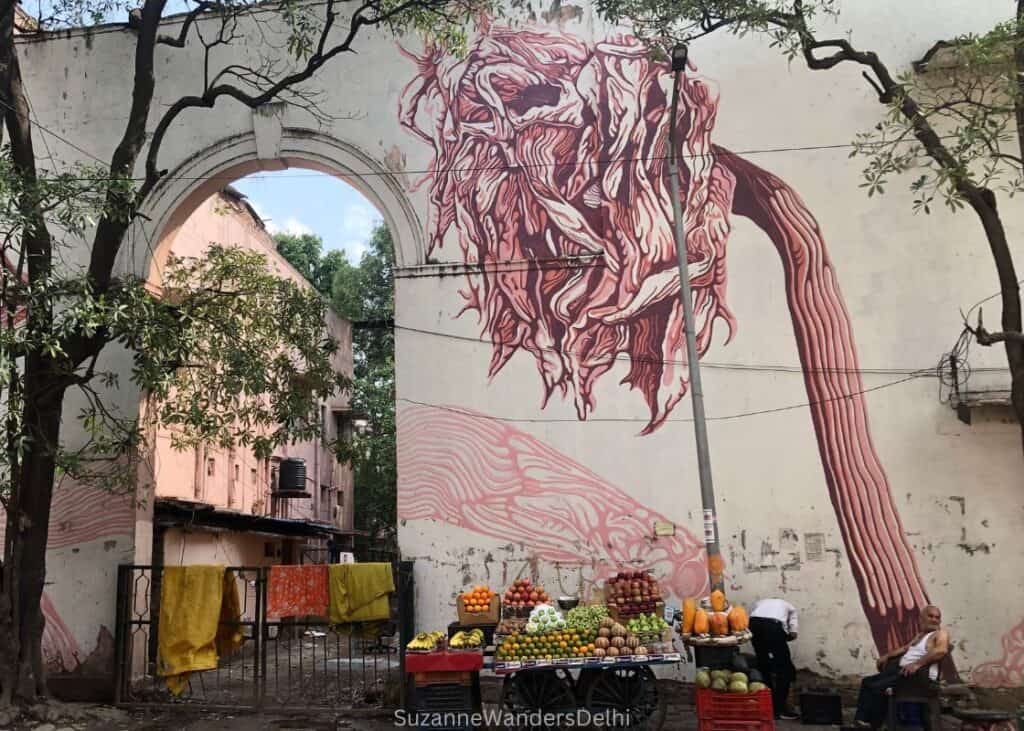
- Lodhi Garden: Delhi’s most beautiful heritage park – you can walk there in 5 minutes and admission is free
- Lodhi Art District: India’s first outdoor art district – 50+ huge murals on social themes in a quiet residential enclave; you can walk there too
- Khan Market: a vibrant, upscale market with many shopping and dining options
- Dilli Haat INA: Delhi’s favourite pedestrian only Indian handicrafts market; there is a small entry fee
Where To Stay
The Tomb of Safdarjung is in a lovely part of South Delhi, one of the greenest and most affluent parts of the city. It’s a walkable and safer area of Delhi. These are my top recommendations near the tomb:
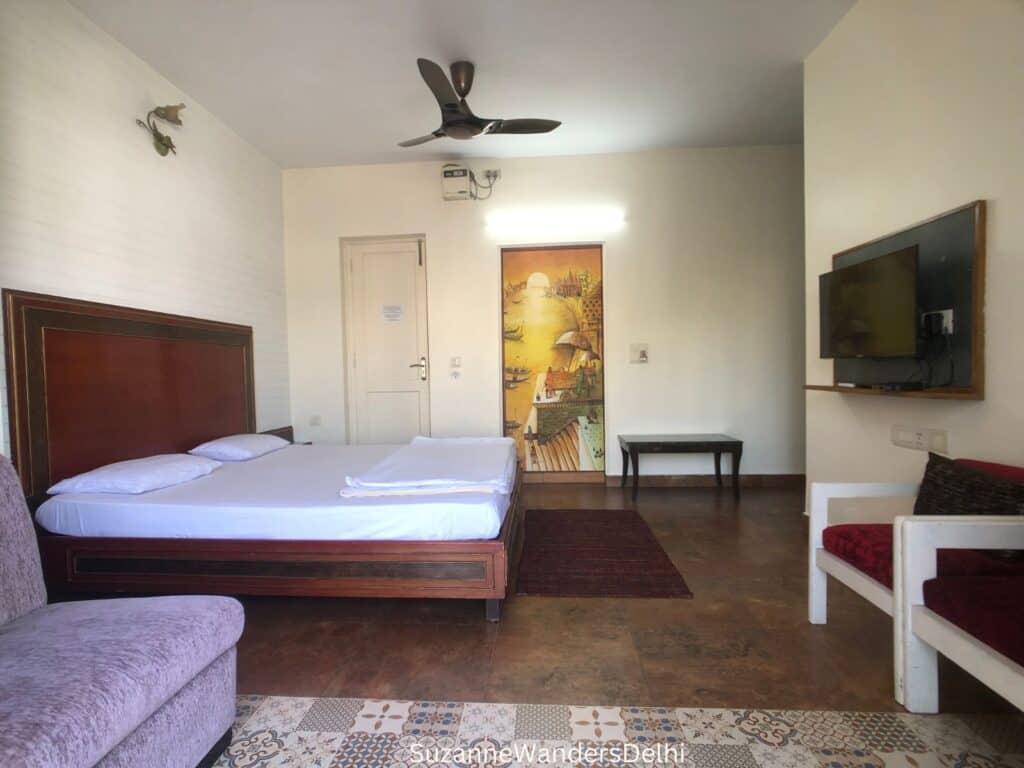
Prakash Kutir B&B (budget)
This is South Delhi’s best family-run bed and breakfast. It’s located in Hauz Khas, a better residential neighbourhood, near a metro station and market with shops and restaurants. A home cooked breakfast is included, and it’s super clean.
📍Check prices and availability at Prakash Kutir B&B
Lutyens Bungalow (mid-range)
This heritage property has an incredible location right beside Lodhi Garden. You can walk to Safdarjung Tomb from here. Rooms are simple but comfortable, and breakfast is included. There’s an outdoor pool and beautiful gardens.
📍Check prices and availability at Lutyens Bungalow
Leela Palace New Delhi (luxury)
The Leela Palace is Delhi’s most beautiful 5 star hotel, and it’s less than 4 km to Safdarjung Tomb. Guest rooms are luxurious, there’s a spa, pool, gym, world-class restaurants and lounges. You can easily explore Delhi from here. If you really want to be pampered, this is where to stay.
📍Check prices and availability at Leela Palace New Delhi
FAQs
Here are some common questions about visiting Safdarjung Tomb in Delhi:
What is the Story Behind Safdarjung Tomb?
Safdarjung Tomb was built in 1754 for Nawab Safdarjung, a powerful Vazir in the Mughal court of emperor Muhammad Shah. It was the last enclosed, garden-style tomb built in India.
Which Metro Station is Closest to Safdarjung Tomb?
The Jorbagh metro station on the Yellow line is the closest station to Safdarjung Tomb. Gate 2 exit of the metro is 400 metres from the entrance at Safdarjung Tomb.
Where is the Nearest Market to Safdarjung Tomb?
The nearest market to Safdarjung Tomb is Khan Market. It is a vibrant, upscale market with many dining and shopping options.
The Wrap-up on Tomb of Safdarjung: Visiting India’s Last Garden Tomb 2025
Safdarjung Tomb is an important site in Delhi. Not only is it the last garden style tomb built in India, it has been the object of undeserved criticism. I’m sure you’ll agree, despite the negative comments about its design and construction, the tomb of Safdarjung is one of Delhi’s most magnificent sites.
Don’t forget travel insurance! It’s always a good idea to carry travel insurance just in case something goes wrong. I really like and use SafetyWing
